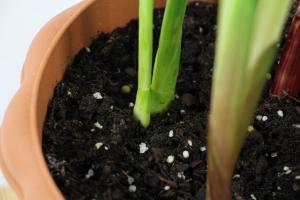How to Package and Ship Potted Plants
Shipping potted plants can be a daunting task for many gardeners. However, with the right packaging materials and shipping technique, it is possible to safely transport your beloved plants from one destination to another. In this article, we will discuss the steps involved in packaging and shipping potted plants.
Step 1: Choose the Appropriate Shipping Container
The first step in packaging and shipping potted plants is to select the right shipping container. Typically, cardboard boxes can be used for small plants, while larger plants may require wooden crates or reinforced boxes. The container should be spacious enough to allow the plant to move around slightly but not too much to avoid damage during transport.
Step 2: Protect the Plant’s Soil
To prevent the soil from spilling and potentially damaging the plant or shipping container, it is important to protect the soil. Use plastic bags, newspaper, or foam peanuts to hold the soil in place. This will also help to keep the plant centered in the pot to avoid damage to the roots.
Step 3: Wrap the Plant
Next, wrap the plant in paper or bubble wrap to reduce movement and to protect the foliage, stems, and branches from damage. The wrapping should be snug, but not too tight to avoid crushing the plant. It is also important to cover the entire plant, including the pot, to prevent scratches and other damages during transport.
Step 4: Secure the Plant in the Shipping Container
Once the plant is wrapped, it can be placed in the shipping container. Use additional packing materials such as peanuts or bubble wrap to fill any spaces around the plant to prevent it from moving. The pot should be secured and centered in the container, and the container should be closed and sealed with packing tape.
Step 5: Label the Shipping Container
Finally, it is important to label the shipping container with the recipient’s address, your address, and any special handling instructions for the carrier. It is also a good idea to include water and light requirements for the plant to ensure that the recipient knows how to care for it upon arrival.
In conclusion, shipping potted plants may seem overwhelming, but with the right packaging and shipping technique, it can be done successfully. Always choose an appropriate shipping container, protect the plant’s soil, wrap the plant, secure it in the container, and label the package. By following these steps, your plants will arrive safely and in great condition.

 how many times do yo...
how many times do yo... how many planted tre...
how many planted tre... how many pine trees ...
how many pine trees ... how many pecan trees...
how many pecan trees... how many plants comp...
how many plants comp... how many plants can ...
how many plants can ... how many plants and ...
how many plants and ... how many pepper plan...
how many pepper plan...




























